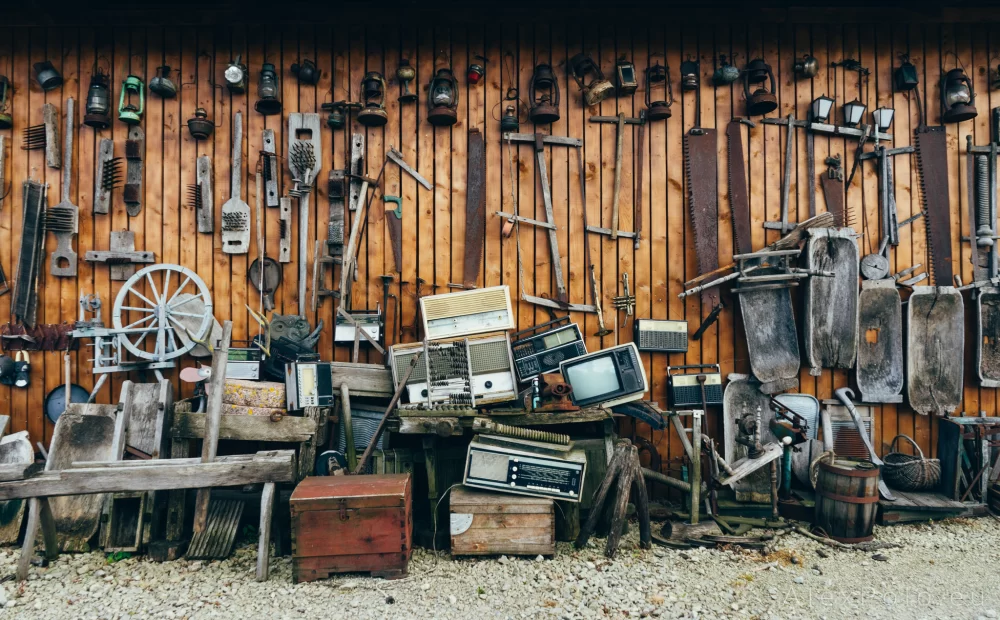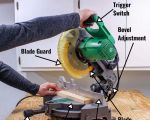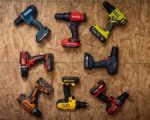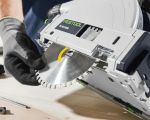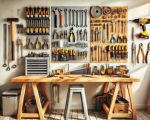1. The Importance of Proper Power Tool Maintenance
As a DIY enthusiast and a regular user of power tools, I’ve learned over the years that the key to ensuring the longevity and effectiveness of my tools lies in proper maintenance. Whether you’re a weekend warrior or a professional, power tools are an investment. They allow us to complete tasks faster, more efficiently, and with better results. However, just like any other mechanical device, power tools need regular care and attention to perform optimally. But how do you maintain your power tools properly? In this article, I’ll share the essential steps I’ve learned to keep my tools in top shape.
1.1 Why Maintenance Matters
Neglecting your power tools can lead to costly repairs, breakdowns, and even dangerous malfunctions. I’ve had my fair share of dealing with tools that suddenly stopped working during a critical moment, and trust me, it's never fun. Proper maintenance can help avoid these issues by ensuring that all parts of your tool are functioning as they should. The longer your tools last, the more you save on expensive replacements or repairs. Plus, taking care of your tools ensures that they perform at their best, which makes your job easier and more enjoyable.
2. Regular Cleaning: The First Step
One of the simplest yet most effective ways to maintain your power tools is through regular cleaning. After each use, I always make sure to clean my tools thoroughly. Whether it’s a drill, saw, or sander, removing dust, dirt, and debris will prevent them from building up and damaging your tools over time.
2.1 Cleaning Methods for Different Tools
Different power tools require different cleaning methods, and understanding the best way to clean your tool can greatly extend its lifespan.
2.1.1 Cleaning Drills
For drills, I start by disconnecting the battery or unplugging it. I then use a dry cloth to wipe down the body of the drill, ensuring I get into the crevices where dirt can accumulate. I use compressed air to blow out any debris that may be stuck in the vents or around the chuck. This ensures the motor stays clean and cool during use, preventing overheating.
2.1.2 Cleaning Saws
For saws, especially circular saws, it’s important to remove sawdust from the blade guard and motor vents. I use a brush to clear any dust around the blade and the gear housing. Afterward, I apply a lubricant to the moving parts to prevent rust and ensure smooth operation. Just like with drills, cleaning saw blades regularly helps prevent the buildup of grime that can affect their performance.
2.1.3 Cleaning Sanders
With sanders, I always check the dust collection bag and make sure it’s clear of debris. I clean the sanding surface using a brush to remove fine dust particles. This ensures that the sander’s abrasive surface can continue to perform effectively, providing smooth finishes without any blockages.
3. Lubrication: Keep Things Running Smoothly
Just as cleaning is important, lubrication is crucial in maintaining your power tools. Over time, moving parts in your tools can wear down, but applying lubricant regularly can reduce friction and prevent premature wear. In my experience, keeping the gears and other moving parts lubricated helps prevent jamming and improves overall performance.
3.1 What to Lubricate
For most power tools, I make sure to lubricate areas like the motor housing, moving gears, and the chuck. Each tool will come with its own recommendations for lubrication, but generally, using a high-quality, non-abrasive lubricant will do the trick.
3.2 How Often Should You Lubricate Your Tools?
The frequency of lubrication will depend on how often you use your tools. I personally make it a habit to lubricate my tools every few uses or when I notice that a part seems to be moving less smoothly than before. Checking the manufacturer’s guidelines for your specific tools is also a great way to stay on track with maintenance.
4. Regular Inspection: Spot Problems Early
Sometimes, problems with power tools are not immediately noticeable during use. Regular inspection can help catch issues early before they develop into costly repairs. I make it a point to inspect my tools for any signs of damage, such as cracks, fraying wires, or loose parts.
4.1 Visual Checks
Start with a simple visual inspection. Look for signs of wear or damage, such as cracks in the housing or frayed cords. If you spot anything unusual, it's important to address it immediately. I've learned the hard way that ignoring these small signs can lead to bigger issues down the road.
4.2 Checking Moving Parts
For tools with moving parts, I always ensure that everything is operating smoothly. I check the blades, gears, and other parts that experience friction to ensure they’re intact. If anything feels loose, I tighten it immediately to prevent accidents or further damage.
5. Proper Storage: Protect Your Tools from Damage
Proper storage is just as important as cleaning and lubrication. I’ve realized that how I store my tools can significantly impact their lifespan. Keeping them in a dry, clean, and organized environment is key to avoiding rust and deterioration.
5.1 Storing Your Tools in a Dry Place
Humidity can cause rust and corrosion to form on metal parts of power tools. I always store my tools in a dry place to avoid this. If possible, I store them in a toolbox or shed with good ventilation to keep moisture away. If I’m storing my tools for a long period, I use silica gel packets to absorb any excess moisture.
5.2 Using Tool Boxes and Organizers
For easy access and organization, I keep my tools in a sturdy tool chest. This not only keeps them secure but also makes it easier to locate what I need. Additionally, storing tools properly prevents them from being damaged or getting knocked around.
6. When to Call a Professional
While most power tool maintenance can be done at home, there are times when it’s best to call in a professional. If I notice that a tool is consistently malfunctioning despite regular cleaning and lubrication, I know it’s time to get expert help.
6.1 Signs It’s Time for Professional Help
Signs that your tool may need professional repair include strange noises, a decrease in performance despite maintenance, or electrical issues. In these cases, it's best to have a professional diagnose and fix the issue to avoid further damage.
Maintaining your power tools properly is not just about keeping them in good condition—it’s also about making sure they stay safe to use and ready for any project. By following these steps for cleaning, lubricating, inspecting, and storing your tools, you’ll be able to extend their lifespan and ensure they perform their best every time you need them. Whether you're an experienced DIYer or just starting, taking the time to care for your tools can save you a lot of time, money, and frustration down the line.

